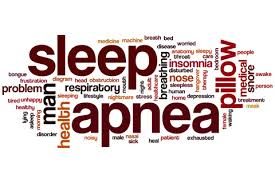- Home
- Editorial
- News
- Practice Guidelines
- Anesthesiology Guidelines
- Cancer Guidelines
- Cardiac Sciences Guidelines
- Critical Care Guidelines
- Dentistry Guidelines
- Dermatology Guidelines
- Diabetes and Endo Guidelines
- Diagnostics Guidelines
- ENT Guidelines
- Featured Practice Guidelines
- Gastroenterology Guidelines
- Geriatrics Guidelines
- Medicine Guidelines
- Nephrology Guidelines
- Neurosciences Guidelines
- Obs and Gynae Guidelines
- Ophthalmology Guidelines
- Orthopaedics Guidelines
- Paediatrics Guidelines
- Psychiatry Guidelines
- Pulmonology Guidelines
- Radiology Guidelines
- Surgery Guidelines
- Urology Guidelines
Air Pollution increases risk of Sleep Apnea

According to new research, air pollution may literally increase the risk of Sleep Apnea thereby causing some people to lose sleep. The study has been published online in the Annals of the American Thoracic Society.
“Prior studies have shown that air pollution impacts lung and heart health, but only a few studies have looked at how air pollution might affect sleep,” said Dr. Billings, lead study author and associate professor of medicine at the University of Washington. “It seemed likely that air pollution was detrimental to sleep, given that air pollution causes upper airway irritation, swelling and congestion, and may also affect the parts of the brain and central nervous system that control breathing patterns and sleep.”
Martha E. Billings and co-authors have reported a link between obstructive sleep apnea and increase in two of the most common air pollutants: fine particulate pollution, known as PM2.5, and nitrogen dioxide (NO2), a traffic-related pollutant.
The researchers analyzed data from 1,974 participants in the Multi-Ethnic Study of Atherosclerosis (MESA) who also enrolled in both MESA’s Sleep and Air Pollution studies. The participants (average age 68) were a diverse group: 36 percent were white, 28 percent black, 24 percent Hispanic and 12 percent Asian. Nearly half (48 percent) of the participants had sleep apnea.
Using air pollution measurements gathered from hundreds of MESA Air and Environmental Protection Agency monitoring sites in six U.S. cities, plus local environment features and sophisticated statistical tools, the research team was able to estimate air pollution exposures at each participant’s home.
The study found a participant’s odds of having sleep apnea increased by:
- 60 percent for each 5 micrograms per cubic meter (μg/m3) increase in yearly PM5 exposure.
- 39 percent for each 10 parts per billion increase in yearly NO2
The researchers adjusted their findings for factors that may have biased their results, including body mass index, family income, diabetes, high blood pressure, smoking and the social economic status of the neighborhood participants lived in.
The researchers also looked at sleep efficiency, the percent of time in bed spent actually asleep compared to total time in bed, using a device called a wrist actigraph that measures small movements. They did not find an association between air pollution and sleep efficiency when they adjusted for those same factors.
Because the study was not a randomized, controlled trial, it cannot prove a cause and effect relationship between air pollution and sleep apnea. The researchers said another study limitation was that they could not adjust their findings for noise and light pollution, which may affect sleep.
Summing up their findings, the authors wrote that air quality improvements may have an unrecognized benefit: better sleep health. “While prior studies have largely focused on individual risk factors for sleep apnea,” the researchers said that their data “suggest environmental features also contribute to the variation of sleep disorders across groups.”
This connection, they added, “has implications for regulatory standards, public health, environmental justice and health disparities, as higher levels of air pollution are more prevalent in poor, urban areas as seen in this MESA cohort.”
For more details click on the link: https://doi.org/10.1513/AnnalsATS.201804-248OC

Disclaimer: This site is primarily intended for healthcare professionals. Any content/information on this website does not replace the advice of medical and/or health professionals and should not be construed as medical/diagnostic advice/endorsement or prescription. Use of this site is subject to our terms of use, privacy policy, advertisement policy. © 2020 Minerva Medical Treatment Pvt Ltd